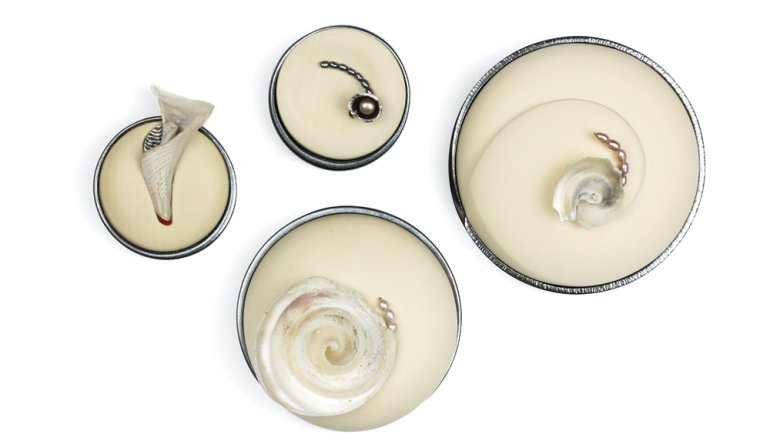Nature, Extracted
Nature, Extracted
If you could venture deep into the rainforest for a week, would you go? Metalsmith Sue Amendolara did, 23 years ago, when she visited Ecuador on a hiking trip. She traveled through the Amazon River basin with a group in a dugout canoe, following a machete-wielding guide by day and sleeping on the jungle floor under mosquito nets amid unfamiliar sounds at night. “Growing up, I didn’t spend much time outdoors. My family actually never even went camping,” she recalls. “What we did a lot, though, was travel to bigger cities in the US and abroad, and I guess all those family outings must have in some way emboldened me enough to also take on that once-in-a-lifetime, extreme adventure.”
That trip could not have come at a better time. Drawing heavily on African and ancient Egyptian artwork at the time, Amendolara had begun to grow bored with her studio work. Her jewelry felt too symmetrical and rigid, lacking the gesture and vitality she wanted to convey. The lush beauty of an equatorial landscape, with its spiky plant forms and brilliantly colored flowers, left an indelible impression on her, one she was eager to honor in metal as soon as she got back to home soil. “I took lots of photos in Ecuador, which helped me find an interesting new direction for my work.” The first piece Amendolara created after her return was Jungle Tree (1993); botanic forms have since become the hallmark of her precise and introspective work.
“Every trip I have ever taken influenced my work in some way,” she says. In the late 1990s, on sabbatical from her art professor role at Edinboro University in Pennsylvania, Amendolara flew to Hawaii to develop an image collection that culminated in the creation of Nest (1998). More recently, the Rockweed series (2012 – 13) was inspired by the landscape of Sardinia. Reservoir (2015) is an abstracted form based on the hot springs in Yellowstone National Park, and Afloat (2015) reflects her experience kayaking through thousands of jellyfish in Mexico.
Over time, the pointy, leafy shapes of Amendolara’s early work have evolved into soft curves, and she has toned down her palette from bold to minimalist – an evolution she ascribes to having children and simply growing up. Her work “reflects the struggles and balance of living, working, and raising a family,” she says. “I don’t start the design process with an intent to create something that is reflective of my situation, but when I look back at my work later on, I realize what I was thinking about at the time.”
Creating an exact replica of a naturally occurring form has never been Amendolara’s purpose. “I don’t think that anyone can create a duplicate of a flower and have it be as beautiful as the original plant,” she says. “But it is important for me to have my work appear to be believable.” By paring down each form to its essence, she hopes to capture the extract of an idea rather than to imitate reality. “Healthy plants are strong, living organisms, yet their forms can be delicate and intricate,” she says in her artist statement. It is this contrast between delicacy and strength that she finds so compelling.
Today, Amendolara takes her botanic cues mostly from the backyard she tends in northwestern Pennsylvania. Edinboro’s campus and her home sit near Lake Erie. “I love it here in the summer,” she says. “It’s a beautiful environment, very laid-back. When my garden is in bloom, I can take all the time I want to sketch and photograph the flowers around me. I plant mostly perennials, and it is always a bit surprising that every year, just like old friends, they all faithfully return to me.”

